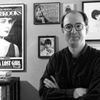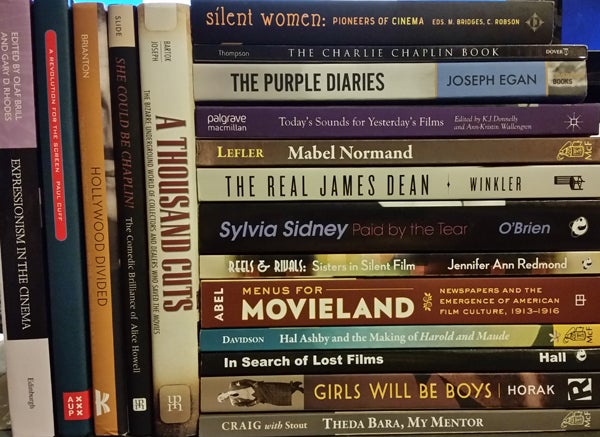
Some of the best film books of 2016
Here is part two of my annual look at the best film books of the year. Whether you are into biographies, film history, pictorials, “making of” books, or critical studies, there was something for just about everyone in 2016. This year’s list may well top last year’s, which was also bountiful. As a matter of fact, there were so many worthwhile books in 2016 that I split this selection into two pieces. Visit “Best Film Books of 2016” on Huffington Post to check out part one of this year’s recommended titles.
Revolution and Tradition
In the 1960s and 1970s, Pauline Kael, Andrew Sarris, and Roger Ebert were three of America’s most widely read film critics, better known, perhaps, than many of the movies they wrote about. What’s little known is that their film criticism was influenced by four earlier critics—Otis Ferguson, Manny Farber, James Agee, and Parker Tyler. The Rhapsodes: How 1940s Critics Changed American Film Culture (University Of Chicago Press) by David Bordwell tells that story. Why were they called “Rhapsodes”—it was because of the “passionate and deliberately offbeat nature of their vernacular prose.”
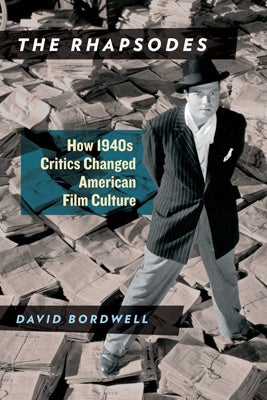
The Rhapsodes: How 1940s Critics Changed American Film Culture
Image is Everything
The movies are a visual medium, and image counts for just about everything. Hollywood Icons: Photographs from the John Kobal Foundation (Antique Collectors Club) by Robert Dance collects some of the most stunning portraits of Hollywood stars you are ever likely to see. This new book, the latest to mine the great Kobal collection, features approximately 200 photographs focusing on the great faces that drew moviegoers into movie theaters by the tens of millions. There’s Gloria Swanson and Louise Brooks, Gary Cooper and Clark Gable, Marlene Dietrich and Hedy Lamarr, as well as Marlon Brando, Gene Kelly and a gorgeous Shirley MacLaine. While some of these images may be familiar, many are not. There are also mini-biographies of the photographers, like Eugene Robert Richee, Ruth Harriet Louise, and George Hurrell.
The Art of the Hollywood Backdrop (Regan Arts) by Richard M. Isackes and Karen L. Maness, is a fascinating, literally behind-the-scenes history of the painted backdrops and the scenic artists who brought them to the big screen. Also out this year are two small press books on the intersection of film and fashion, The Fashion of Film: Fashion Design Inspired by Cinema (Mitchell Beazley) by Amber Jane Butchart, and Fashion in Film (Laurence King Publishing) by Christopher Laverty. For those keen on the subject, each is worth checking out.

Hollywood Icons: Photographs from the John Kobal Foundation
She Could be Chaplin!
Few film historians have done as much to preserve our cinematic history then Anthony Slide. An accomplished and prolific author, Slide’s latest is She Could Be Chaplin!: The Comedic Brilliance of Alice Howell (University Press of Mississippi). Howell (1886–1961) is slowly gaining recognition as one of the important slapstick comediennes of the silent era. This new study, the first book-length appreciation, identifies her place in the comedy hierarchy alongside the best-known of silent comediennes, Mabel Normand. Beginning in 1914, Howell quickly developed a distinctive style and eccentric attire and mannerisms, successfully hiding her good looks, and was soon identified as the “Female Charlie Chaplin.” She was a star by 1915, and continued her career through 1928 and the advent of sound. Howell was also the matriarch of a prominent American family that includes son-in-law and director George Stevens and grandson George Stevens Jr., founder of the American Film Institute and the Kennedy Center Honors, who provides a foreword.
Speaking of Charlie Chaplin, Dover has just released The Charlie Chaplin Book: Ten Stories Adapted from Classic Shorts by Robert Keene Thompson, a noted screenwriter of the time. It’s fun. Also just out is Charlie Chaplin’s Little Tramp in America, 1947–77 (Palgrave Macmillan) by Lisa Stein Haven.
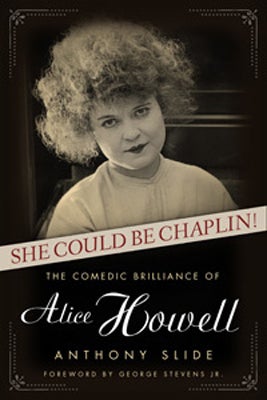
She Could Be Chaplin!: The Comedic Brilliance of Alice Howell
Silent Women
As with Alice Howell, there’s renewed interest in documenting the too often little recognized careers of the cinema’s pioneering women—both behind and in front of the camera. Two books that advance the cause are Silent Women: Pioneers of Cinema (Aurora Metro Press) edited by Cheryl Robson and Melody Bridges, and REELS & RIVALS: Sisters in Silent Films (BearManor Media) by Jennifer Ann Redmond. The former looks at early female producers, early female directors, and early African–American female filmmakers, among others; as well, Shelley Stamp contributes an essay on critics, reformers and educators, and Kevin Brownlow contributes his earlier interview with director Dorothy Arzner. REELS & RIVALS is a lot of fun, and something of a revelation. Who knew there were so many sets of sisters in early Hollywood? Beside such superstars as Constance, Natalie, and Norma Talmadge, and Lillian and Dorothy Gish, and Dolores and Helene Costello, there were also the Flugraths (which included Viola Dana, Shirley Mason and the little known Edna Flugrath) and the Youngs (which included Loretta Young, Sally Blane and the little known Polly Ann Young). And that’s just the tip of the iceberg. There’s also Laura and Violet La Plante….
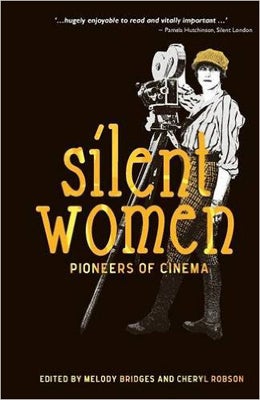
Silent Women: Pioneers of Cinema
Some Biographies of Early Actresses
McFarland is one of the leading publishers of books related to early film. New this year are three biographies of three early actresses, each of which serves as a worthwhile introduction to their subject. The books include, Mabel Normand: The Life and Career of a Hollywood Madcap (McFarland) by Timothy Dean Lefler, a look at the great early comedian, Pola Negri: Temptress of Silent Hollywood (McFarland) by Sergio Delgado, a look at the Polish-born superstar who conquered two continents, and Bebe Daniels: Hollywood's Good Little Bad Girl (McFarland) by Charles L. Epting, a first ever look at the popular silent film star.
Also, don’t miss The Curse of Beauty: The Scandalous & Tragic Life of Audrey Munson, America's First Supermodel (Regan Arts) by James Bone. Not only was Munson (1891 – 1996) a great beauty and a remarkable personality sometimes referred to as the “American Venus,” she was also the first American actress to appear naked in a film.
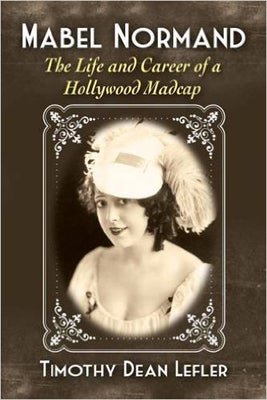
Mabel Normand: The Life and Career of a Hollywood Madcap
German Film
Prepare to be impressed by The Promise of Cinema: German Film Theory, 1907–1933 (University of California Press), edited by Anton Kæs, Nicholas Baer, and Michæl Cowan. This 720 page doorstop is filled with critical essays by the likes of Béla Balázs, Walter Benjamin, Theodor Adorno and Siegfried Kracauer alongside writings from directors and producers like Fritz Lang, F.W. Murnau, Ernst Lubitsch, Billie Wilder, G.W. Pabst and Erich Pommer, alongside literary writers such as Bertolt, Brecht, Joseph Roth, Alfred Doblin, and Heinrich Mann, alongside actors like Emil Jannings, Marlene Dietrich, and Henny Porten, alongside film world figures like Lotte Eisner, Leni Riefenstahl, and Walter Ruttmann. There are also pieces by the likes of Lou Andreas-Salome, Karl Kraus, Kurt Weill, and Lazlo Moholy-Nagy. All of it is vintage material, and together, side by side, a vital frisson arises. This is the most comprehensive collection of German writings on film published to date. It is a stunning anthology, and a stunning achievement, and as such qualifies it as the film book of the year. Also impressive is an adjunct website located at www.thepromiseofcinema.com

The Promise of Cinema: German Film Theory, 1907–1933
Film Noir
You know film noir when you see it: the shadowy setting, the cynical detective, the femme fatale, the twist of fate. And then something ends badly. Into the Dark: The Hidden World of Film Noir, 1941-1950 (Running Press) by Mark A. Vieira highlights this resurgent genre with dozens of compelling photographs and a guide to 82 of its best films. Vieira, one of our fine film historians, quotes the artists who made these movies and the critics who wrote about them, taking readers on a year-by-year tour as movies like Detour, Double Indemnity, Mildred Pierce, and Sunset Boulevard were released upon an already anxious public. Purchase this book before attending one of the film noir festivals springing up around the country.
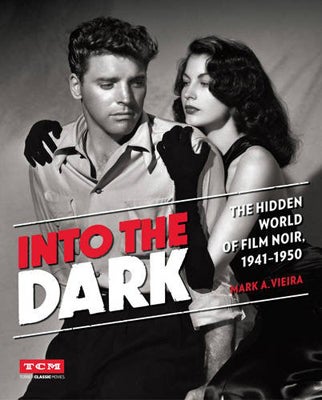
Into the Dark: The Hidden World of Film Noir, 1941-1950
More Biographies of Actresses
Three stars who achieved of their greatest fame in the late 1920s and early 1930’s are profiled in three new books. Winnie Lightner: Tomboy of the Talkies (University Press of Mississippi) by David L. Lightner tells the story of one of the best female comedians of the sound era, and how her career was ruined. Una Merkel: The Actress with Sassy Wit and Southern Charm (BearManor Media) by Larry Sean Kinder tells the story of a quirky actress who more often than not played supporting roles to the more celebrated actors of her day—Jean Harlow, Spencer Tracy, Clark Gable, James Stewart, Carole Lombard, and Marlene Dietrich, to name a few. A whole new generation of fans came to know this beautiful brunette actress in Tim Burton's Beetlejuice (1988), though few may have known of her work alongside Spencer Tracy, James Cagney, and Humphrey Bogart decades earlier; her story is told in Sylvia Sidney: Paid by the Tear (BearManor Media) by Scott O'Brien.
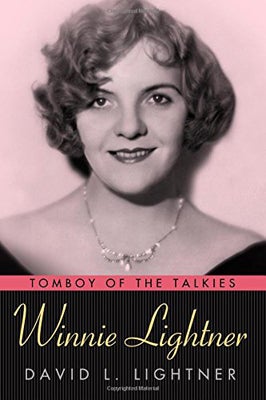
Winnie Lightner: Tomboy of the Talkies
Compare and Contrast
The story behind one of the most iconic films is revealed in The Godfather Notebook (Regan Arts), by Francis Ford Coppola. The director's never-before-published notes and annotations on the celebrated Mario Puzo novel includes a new introduction as well as photographs from on and off the set.
As has been said, ours is a post-literature culture dominated by screens. From David Thomson, the celebrated author of the celebrated Biographical Dictionary of Film (now in its sixth edition) comes something a little different, Television: A Biography (Thames & Hudson). This is not a formal history of the small screen, but rather a Thomsonian take on a medium (and its message) that has swallowed film whole.
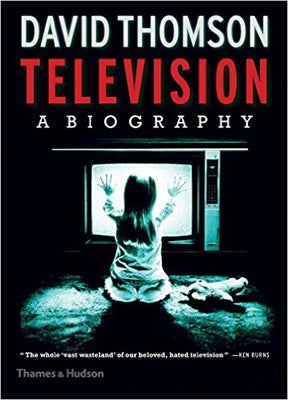
Television: A Biography
Also Worth Checking out
Admittedly, this last group of books is a catch-all. Nevertheless, each of these titles is well worth checking out. Natalie Wood: Reflections on a Legendary Life (Running Press) by Manoah Bowman, and with a foreword Robert Wagner and an afterword by Robert Redford, profiles the child actor (Miracle on 34th Street) who successfully transitioned to adult stardom (Splendor in the Grass, West Side Story). Her contemporary, and co-star in Rebel Without a Cause, is profiled in The Real James Dean: Intimate Memories from Those Who Knew Him Best (Chicago Review Press) edited by Peter L. Winkler, with a foreword by George Stevens Jr. It is a personal look at the iconic star.
At one time or another, Harold and Maude was likely your favorite film. The story behind the film is engagingly told in Hal Ashby and the Making of Harold and Maude (McFarland) by James A. Davidson. A look at a classic Japanese film is found in Kurosawa's Rashomon: A Vanished City, a Lost Brother, and the Voice Inside His Iconic Films (Pegasus Books) by Paul Anderer.
I enjoyed Down from the Attic: Rare Thrillers of the Silent Era through the 1950s (McFarland) by John T. Soister and Henry Nicolella. The authors bring back into the light rough gems like Der Tunnel (1915), about the building of a transatlantic tunnel, and The Emperor's Baker--The Baker's Emperor (1951), a bizarre Marxist take on the Golem legend.
Last but not least are these two scholarly books, Today's Sounds for Yesterday's Films: Making Music for Silent Cinema (Palgrave Macmillan) edited by K.J. Donnelly and Ann-Kristin Wallengren, and Celluloid Pueblo: Western Ways Films and the Invention of the Postwar Southwest (University of Arizona Press) by Jennifer L. Jenkins.
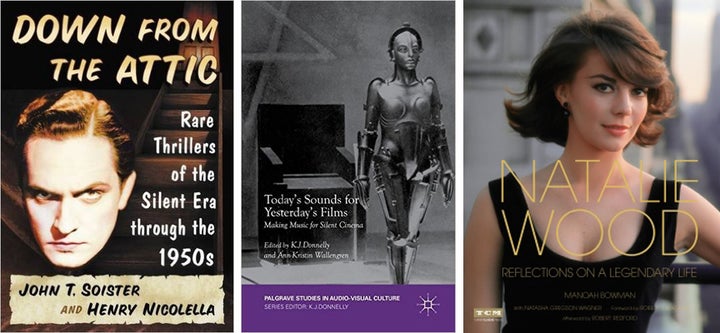
Down from the Attic / Today's Sounds for Yesterday's Films / Natalie Wood: Reflections on a Legendary Life
Thomas Gladysz is an arts and entertainment writer who has been contributing to the Huffington Post since 2010. He is also the founding director of the Louise Brooks Society, an online archive and international fan club begun in 1995. Gladysz has written many articles on the actress, and is currently working on The Films of Louise Brooks for a publisher yet to be determined.
